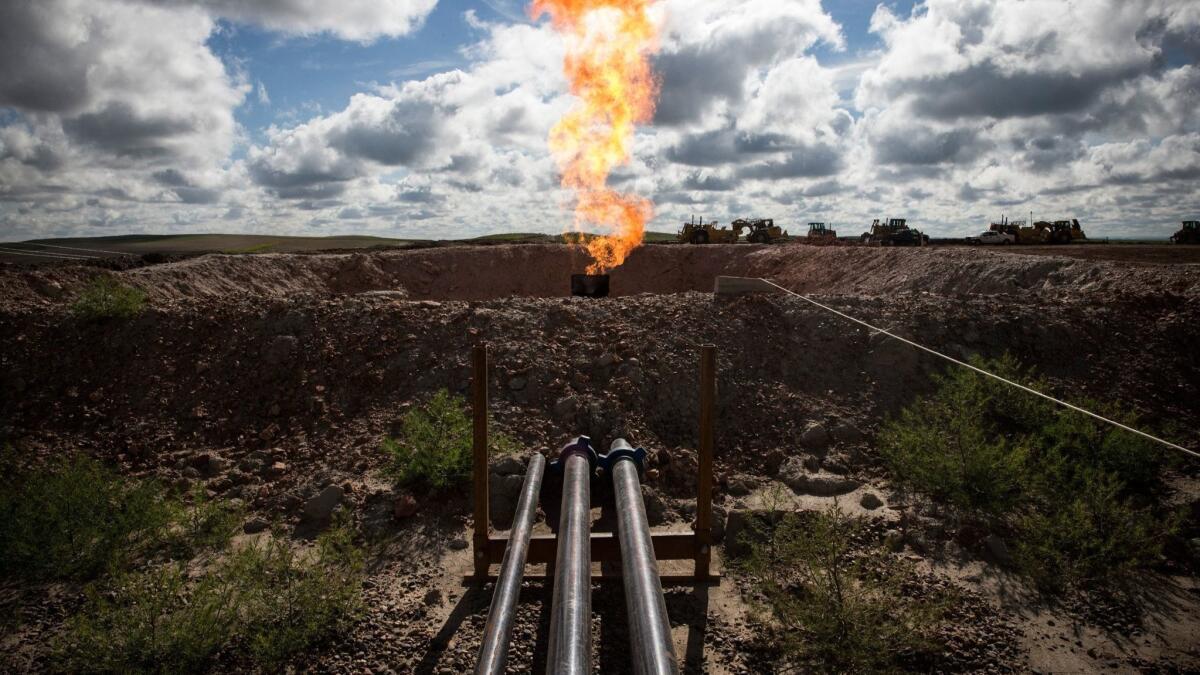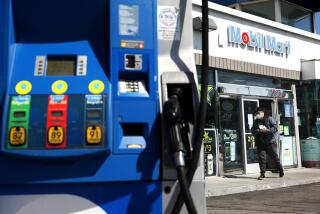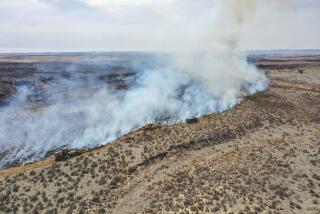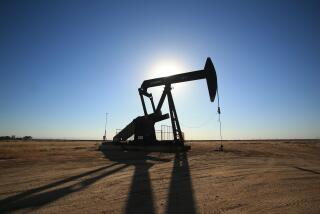Gas glut in West Texas sparks a quandary: How much of it should be burned off?

Texas is facing a burning question that’s pitting the state’s economy against its environment, and oil drillers against each other.
With natural gas pipelines in the Permian Basin reaching 98% of capacity, Texas is weighing whether to keep intact or loosen strict state regulations that limit flaring, the process used by drillers to burn off excess gas pumped up along with their oil. Now the limit for individual wells is 45 days. After that, without a rare-granted exemption, the gas must be piped away or the well must close.
Shut wells mean less revenue for companies and the state, at a time when oil prices and production are surging while regional gas prices are in a tailspin.
Ending or expanding the cap solves the problem. But it also gives drillers who haven’t paid for space on existing pipes a competitive edge over those who have, and could spark environmental protests.
“This is not a simple thing we’re talking about,” said Ryan Sitton of the Texas Railroad Commission, which oversees the West Texas oilfields. “It’d be a pretty big policy shift and we want to be very thoughtful about what the ramifications could be.”
Sitton said he’s meeting with producers across the Permian, and hopes to have a decision within six months, when he believes the dilemma will come to a head.
Multiple gas pipelines criss-cross the Permian, with a total capacity of 8.1 billion cubic feet a day. But as the price of crude has risen, so has production, growing 25% in the last year.
The gas associated with that boom had filled up all but 2% of pipeline capacity as of the end of April, according to RBN Energy LLC, and Rystad Energy AS suggests oil output may grow 10% more by the end of 2018.
Natural gas prices in the Permian, meanwhile, are the cheapest in the nation. Spot prices at the Waha hub in West Texas were down 49% this year.
The region is “ground zero for the oversupply caused by associated gas production,” John Kilduff, a partner at Again Capital LLC in New York, said in an email. If oil output continues to boom, gas prices “could certainly go to zero.”
There’s relief on the way, with as much as 10.5 billion cubic feet a day of gas pipelines proposed or being built. But the bulk of it won’t arrive until late next year or in 2020.
In the meantime, changing the rules could affect different constituencies in different ways.
Drillers such as Centennial Resource Development Inc., for instance, have paid up-front to guarantee room on existing pipelines, assuming that the current limits wouldn’t be dramatically altered. Concern that extended flaring could punish companies already heavily invested in the last space on existing lines is key to the railroad commission, according to Sitton.
Going hand-in-hand with the financial questions are those revolving around air quality. Flaring releases toxic compounds such as cancer-causing benzene and matter linked to respiratory illnesses, according to the Environmental Defense Fund, which is against looser flaring regulations.
Suzanne Franklin, 67, and her husband, James, can see 17 flares breathing fire into the sky from the front porch of their ranch in Reeves County. The visible pollution has definitely affected their life.
“We used to go out and look up at the stars,” she said. “Now, you don’t see any stars.”
She believes the flaring has affected her breathing. Since the first flare was lighted up about a year ago, her doctor has put her on three different medicines “just to breathe right.”
Seven counties in the region already rank in the top 10 nationwide for childhood asthma attacks, according to the Clean Air Task Force. More flaring could increase that standing, according to Colin Leyden, the fund’s senior manager of regulatory and legislative affairs.
Texas now flares about 3% of the gas produced. Matt Portillo, analyst at Tudor Pickering Holt & Co., said that could rise as much as five times higher in the next year.
Sitton said a primary role for the railroad commission “is to prevent waste.”
“If you believe that waste is not dollar waste, but the waste of the hydrocarbon molecule, then we have to be very judicious about when we grant flaring exemptions. Those are the questions that we are trying to get our heads around.”






